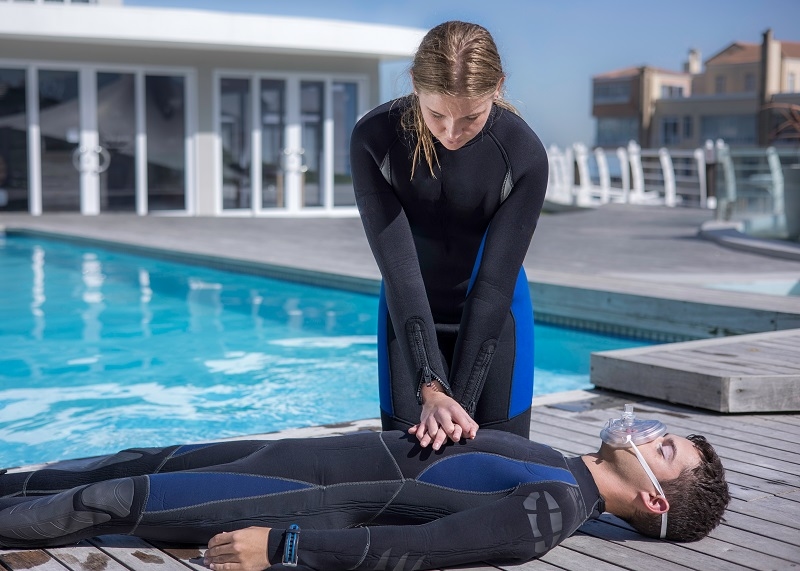
Scuba diving is an exciting adventure, but there are also built-in dangers that need training and quick questioning. Having a sound scuba diving emergency response plan is essential to every diver, whether new or vintage pro. Emergencies involving out-of-air situations, system failures, or losing a dive buddy can spiral out of control quickly underwater if not managed properly. This guide is designed to help divers recognize, prepare for, and reply efficaciously to common underwater emergencies.
Key strategies like buddy respiratory, emergency ascent, and the lost diver protocol are crucial capabilities that could save lives. By knowledge and working towards those responses, divers can stay calm under strain and take suitable action to protect themselves and their dive partners. Remember, being prepared isn't always pretty much knowing what to do—it's about building the self-belief to behave decisively while it counts the most.
Low on air even while scuba diving is one of the most essential emergencies a diver will ever come upon. An out-of-air scenario can, in the end, result from system malfunctions, air supply mismanagement, or unexpected stops underwater. Survival hinges on final calm and quick searching. Divers must immediately sign off their buddy and start buddy respiration if necessary. If there is to be no pal, a controlled emergency ascent is safest. Safety checks at regular intervals, proper dive planning, and emergency drill practice will forestall panic in a true situation. Being prepared and educated ensures a fast, secure response while air deliver runs out.
Running out of air is one of the maximum not unusual and frightening emergencies in scuba diving. Out-of-air eventualities can occur due to system malfunction, poor air management, or unforeseen exertion. Your immediate purpose in any out-of-air situation is to steady an air supply whilst remaining calm.
Practicing response to out-of-air situations during education prepares your muscle reminiscence and improves your capacity to stay calm. Prevention is similarly crucial—constantly check your tank strain, dive inside your limits, and talk regularly together with your pal.
Buddy respiratory is a vital scuba diving emergency reaction method used when a diver runs out of air and has no get entry to to an alternate air supply. Although many divers now use octopus regulators, gaining knowledge of pal breathing remains a middle a part of diver training.
In excessive-stress conditions, a friend's breathing requires agreement and composure. Practice frequently with your dive associate so that, in a real emergency, your response is computerized and effective.

An emergency ascent is a final-lodge scuba diving emergency response whilst no air supply is available. It is dangerous if done improperly, but lifesaving when carried out with education and manipulate.
Remember never to preserve your breath at some stage in the ascent. Expandable air can motive lung overexpansion injuries. Exhale continuously and slowly, even as you retain a watch in your ascent charge.
Even experienced divers can get lost from their friends or the facility. Having a solid lost diver procedure in your scuba diving emergency response plan is crucial to prevent things from worsening.
Routine Lost Diver Procedure:
Surface reunification is lots simpler and safer than seeking to reconnect underwater. Prevention includes common verbal exchange, proper planning, and clear dive roles.
Effective scuba diving emergency reaction starts before you hit the water. Pre-dive planning is your first line of protection.
Pre-Dive Safety Checks (Start With Review And Friend):
Verbal communication that is clear, emergency procedures, and dive fantasies must be discussed in detail. Familiarize yourself with hand signals, negotiate intensity limits, and agree on contingency plans.
A proper system can turn a capability tragedy into an achievable event. A whole scuba diving emergency response toolkit consists of:
Surface Marker Buoy (SMB): For visibility at the floor.
Carry what you recognize how to use, and hold your equipment streamlined to lessen entanglement hazards.
While out-of-air eventualities and emergency ascents are extra commonplace, decompression contamination (DCI) and barotrauma are serious scientific situations that require immediate reaction.
For barotrauma, which ends from stress adjustments, save you harm by using equalizing early and frequently, ascending slowly, and never diving with congestion.
A strong scuba diving emergency response thoughts-set entails persisted learning. Take refresher publications frequently, and participate in Rescue Diver training to in addition help others in trouble.
Suggested Certifications:
With every new ability, your self belief and capability boom, making you a more secure diver for your self and others.
Panic is the primary enemy in any scuba diving emergency reaction situation. Mental preparedness and calm decision-making store lives.
Confidence comes with repetition. The greater you prepare, the extra natural your reactions become.
Preparedness is the diver’s best asset while facing underwater demanding situations. A strong foundation in scuba diving emergency response techniques empowers divers to react speedily and flippantly when things don’t go as deliberate. Mastering responses to out-of-air scenarios, which include pal breathing or acting a managed emergency ascent, can suggest the difference between a secure go back and an extreme incident. Equally critical is understanding the way to manage separation through a clean lost diver protocol, which keeps away from panic and courses the diver back to safety. Emergencies can appear without caution, however, with constant schooling and situational consciousness, divers can minimize dangers and revel in the underwater global with self belief. This manual serves as a reminder that protection is not just a checklist—it’s an ongoing dedication to information, training, and practice. Dive clever, dive safe, and always be ready to respond when the sudden occurs.
This content was created by AI